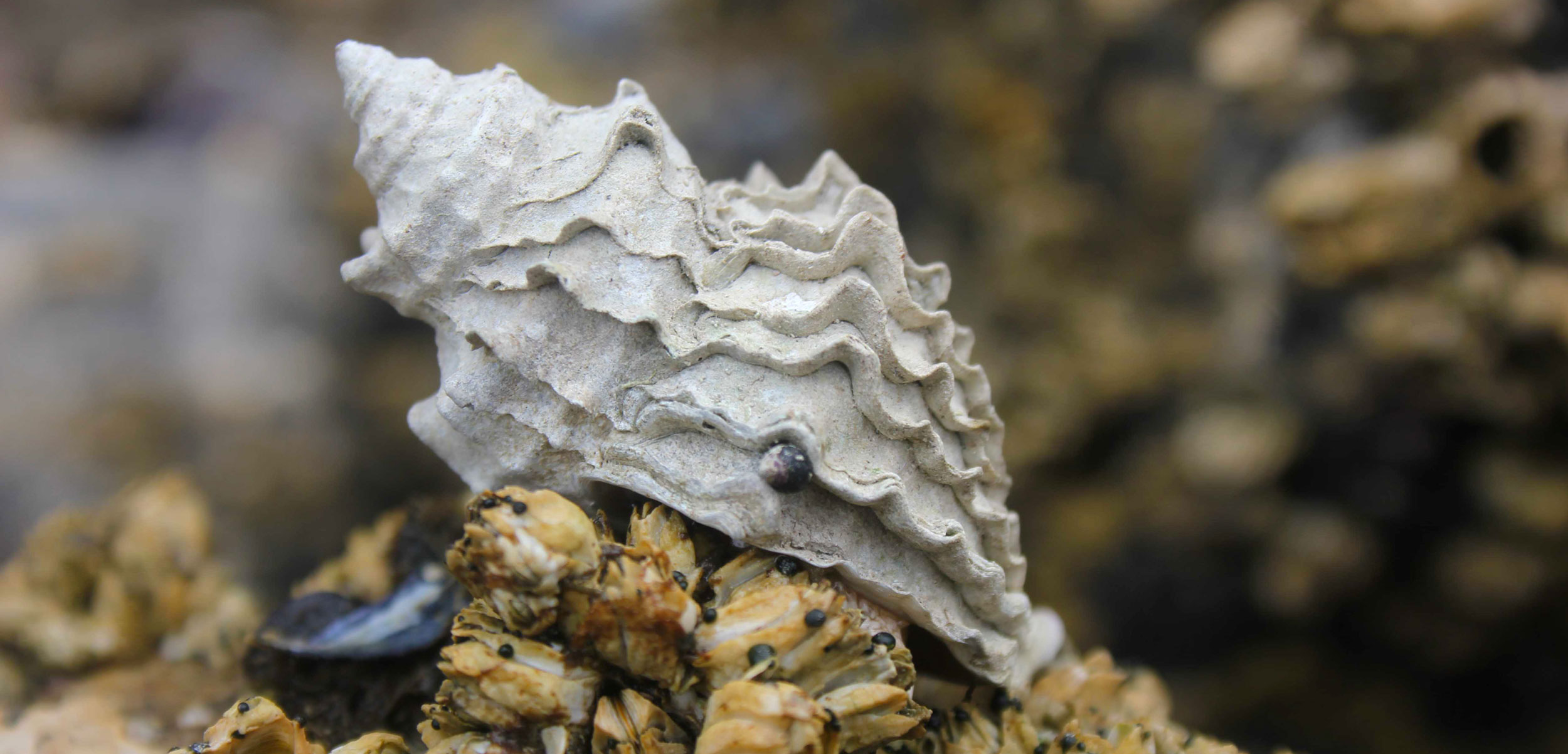This Snail Fights Sea Stars with Fancy Frills
New research investigates why some sea snails use precious resources to make their shells extra fancy.
Article body copy
The curiosity of two university students has led them to explain why a common marine snail would make the effort to grow ruffles on its shell.
The frilled dogwinkle lives in the intertidal zone from Southeast Alaska to California. Its spiral shell is about the size of a small lemon and comes in two different forms: thick and smooth, or thin with elaborate frilly ridges. Biologists knew that the thick shells make a good defense against the crushing claws of red rock crabs, and, in areas with few or no crabs, the snails tend to thriftily make a thinner shell. The thin shells have another feature: ruffles. But why would the snail use precious energy and resources to adorn itself?
University of Alberta biologist Rich Palmer had pondered this question for years when one of his students proposed an experiment to test if the ruffles defend against the ravenous ochre sea star. University of Victoria undergraduate student Owen Newson, who worked with Rokzanna Basi from the University of British Columbia, set out to measure the sea stars’ reactions to three morphs of the dogwinkle: frilly, smooth, and “fake-smooth” snails, whose protrusions they filed off.
Newson and Basi hypothesized that if there were some biological or chemical difference between the two types of snails—such as a change in flavor—sea stars would eat the fake-smooth snails at the same rate as the ruffled ones. Instead, they found that the filed-down snails were gobbled more often than the frilled snails, showing that the frills served as a physical defense.
The study didn’t break down exactly why the frills made for less feasting, but Newson has some suspicions. A sea star can’t crush or bore through shells, so it crawls on top of its prey and uses its dextrous arms to turn it over and expose the shell’s opening, through which it digests the snail’s flesh. Frills probably make handling the snail awkward, says Newson. “If [the sea stars] can’t turn the snail over then they can’t actually eat it.”
Newson and Basi did the work at the Bamfield Marine Sciences Centre (BMSC) in British Columbia. Palmer is thrilled that it was undergraduate students who solved the puzzle.
“Gastropods are really fascinating,” says Palmer. “They’re so beautiful and they come in such an astonishing range of shapes and colors and sculptures. How could you not help but wonder, what’s that for?”
Paul Bourdeau, a biologist at Humboldt State University in Arcata, California, who has studied the frilled dogwinkle, says that scientists have long assumed that protrusions like frills were for defense. This study, he says, nicely puts longstanding assumptions to the test. The next step is to examine exactly how the frills and other defenses deter the sea stars. Bourdeau’s research suggests that the frilled dogwinkle may also grow a more elongated shell when it lives near sea stars, so it can retreat farther inside.
Newson now works at BMSC as a marine science educator, giving visitors tours of the coast. When someone asks why the spiral-shelled snails have frills, he can explain how the reason is far from frivolous.

